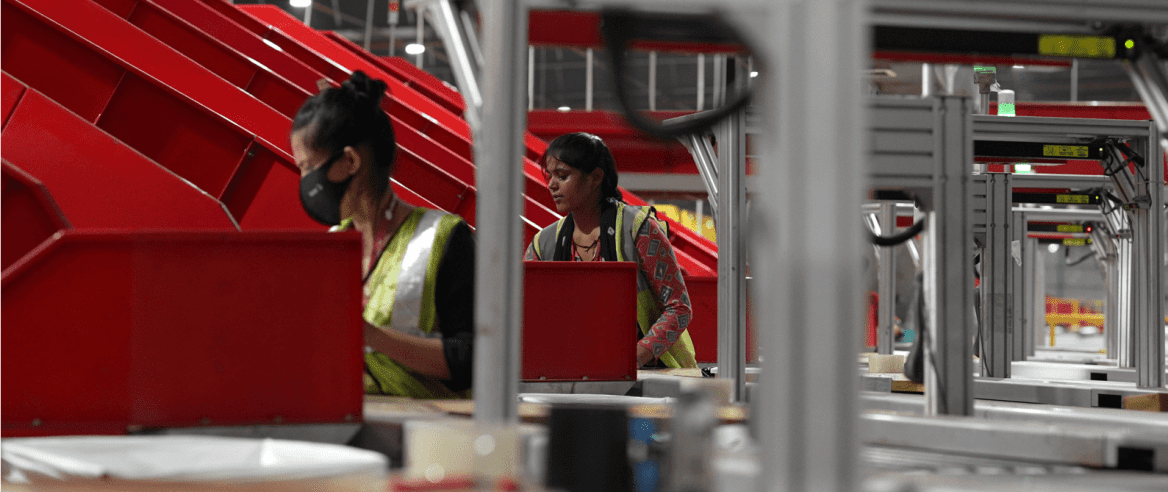Beyond Infrastructure: Why the WASH Sector Needs Local Private Providers to Reach the Underserved
Our experience shows that formal partnerships with local WASH providers can serve three to four times more people per…

Taking India’s growth story to the next level may well hinge on one critical lever: unlocking the full potential of its women. Increasing women’s labor force participation in India can catalyze an economic boom—according to one projection, achieving gender parity in the workforce could add 27% to its GDP. For a better sense of what’s on the line, consider this: India needs to bring an additional 400 million women into the workforce to hit its economic goals for 2047. Achieving this would mean nearly doubling the women’s labor force participation rate (WLFPR) to 70%, thereby contributing USD 14 trillion to the economy. As the nation aims for an ambitious USD 30 trillion economy, boosting women’s workforce participation is imperative.
But the ripple effects don’t stop at the GDP. When women work, it sets off a chain reaction of positive social outcomes. According to the ILO, women’s work may be the single most poverty-reducing factor in developing economies. Higher WLFPR and greater earnings can also spur higher school enrollment rates, including for girls, as women are more likely than men to invest a large proportion of their income in the education of their children. Moreover, as women work and gain financial independence, they marry later, having the spillover effect of increasing the marriage age for their younger sisters.
Despite the clear benefits, societal mindsets continue to block women’s workforce participation. Unfortunately, 84% of working-age urban Indian women from low-income households need a family member’s permission to work. One in four key decision-makers in households outright believe that women should not work at all, and an overwhelming majority—72%—of the rest believe that women should only work from home or engage in a small business, in order to devote more time to household work. These beliefs create a rigid, invisible barrier, tethering women to the home.
At the root of the problem is a deeply ingrained belief that caregiving and household responsibilities are exclusively women’s work. A high 69% of key decision-makers in households firmly believe that the main role of a woman is to take care of the home and children. According to the National Statistical Office’s 2019 Time Use Survey, 81% of women (including girls older than 6 years) in India spend time on unpaid domestic services for household members, as opposed to only 26% of men. Globally, women do 2.6 times more unpaid work than men, but in India, this figure jumps to nearly ten times.
But gender-biased attitudes and norms aren’t only limited to women’s role at home. Even when vocational training is provided to women, it reinforces gender stereotypes and limits women’s opportunities. While more than 30% of women have had some level of vocational training, 85% of trained women have received training in gendered topics like sewing and beauty or make-up services.
Mindsets don’t change overnight, but public service campaigns in India and other countries have had success in driving desired changes in societal attitudes and public behavior. India has a strong history of behavior change campaigns. The Swachh Bharat Abhiyan has raised public consciousness of sanitation and cleanliness as a point of national pride, while the Beti Bachao, Beti Padhao campaign has sparked a dialogue on gender equity and the importance of educating girls.
In similar vein, other countries too have run impactful public service campaigns. For example, the EU’s #EndGenderSterotypes campaign challenged restrictive gender roles by featuring ‘uncommon’, ‘unexpected’, and ‘surprising’ depictions of men and women—such as a woman firefighter, a woman president honoring a high-ranking military woman, a father styling his daughter’s hair, and a man knitting in a public bus. Meanwhile, the #DadonBoard campaign in the Nordic region encouraged fathers to promote equal parenting by inspiring one another. By showcasing positive examples of active fatherhood, it emphasized that fathers can and should participate equally in childcare and household responsibilities.
Drawing inspiration from these impactful initiatives, public service messages that challenge and dismantle regressive mindsets about women’s role in society can strengthen ongoing gender equity efforts in India.
To break the perception that caregiving and domestic work are the responsibility of women alone, multimedia public service campaigns can emphasize that these are shared responsibilities of spouses. Showcasing men engaged in activities like cooking, cleaning, and taking care of children and elderly in the house can help shift deeply ingrained social norms.
Public service campaigns can also promote women’s economic empowerment by highlighting women in the workforce. Building on ongoing women-centric campaigns, for example those promoting nurturing and education of girls, these initiatives can include a focus on making women self-reliant and financially independent. These campaigns can portray women thriving in the workforce, including in unconventional and diverse roles like delivery agents, plumbers, or field salespersons, challenging vocational stereotypes.
Collaboration across sectors will be key in designing and implementing such campaigns for maximum impact. The public and private sectors, civil society organizations, non-governmental organizations, and professional associations working towards women empowerment can all contribute, each bringing unique strengths to this effort. The private sector, with its marketing muscle and storytelling expertise, can provide invaluable support to government-led campaigns, embedding these themes into mainstream advertising and brand messaging. Companies can also leverage their corporate social responsibility funds to contribute to these campaigns. Civil society organizations and non-profits can ensure these messages reach the communities where they are most needed.
Ultimately, the goal isn’t just to have more women in the workforce—it’s to create a society where the idea of limiting anyone’s potential based on gender becomes unthinkable. It’s time to break the chain of regressive mindsets and let women lead India into its next chapter of growth and progress.

Associate Director
Our experience shows that formal partnerships with local WASH providers can serve three to four times more people per…
Evaluations, whether formative or summative, should be learning-oriented—helping funders and implementers adapt, avoid wasted effort, and strengthen real impac…
Funders working in the Global South can incorporate market-based solutions to widen the development resource pool and build pathways…
You will also receive email updates on new ideas and resources from FSG.
"*" indicates required fields
You will also receive email updates on new ideas and resources from FSG.
"*" indicates required fields
Get updates on new ideas and resources from FSG.
"*" indicates required fields
| Cookie | Duration | Description |
|---|---|---|
| cookielawinfo-checkbox-analytics | 11 months | This cookie is set by GDPR Cookie Consent plugin. The cookie is used to store the user consent for the cookies in the category "Analytics". |
| cookielawinfo-checkbox-functional | 11 months | The cookie is set by GDPR cookie consent to record the user consent for the cookies in the category "Functional". |
| cookielawinfo-checkbox-necessary | 11 months | This cookie is set by GDPR Cookie Consent plugin. The cookies is used to store the user consent for the cookies in the category "Necessary". |
| cookielawinfo-checkbox-others | 11 months | This cookie is set by GDPR Cookie Consent plugin. The cookie is used to store the user consent for the cookies in the category "Other. |
| cookielawinfo-checkbox-performance | 11 months | This cookie is set by GDPR Cookie Consent plugin. The cookie is used to store the user consent for the cookies in the category "Performance". |
| viewed_cookie_policy | 11 months | The cookie is set by the GDPR Cookie Consent plugin and is used to store whether or not user has consented to the use of cookies. It does not store any personal data. |
